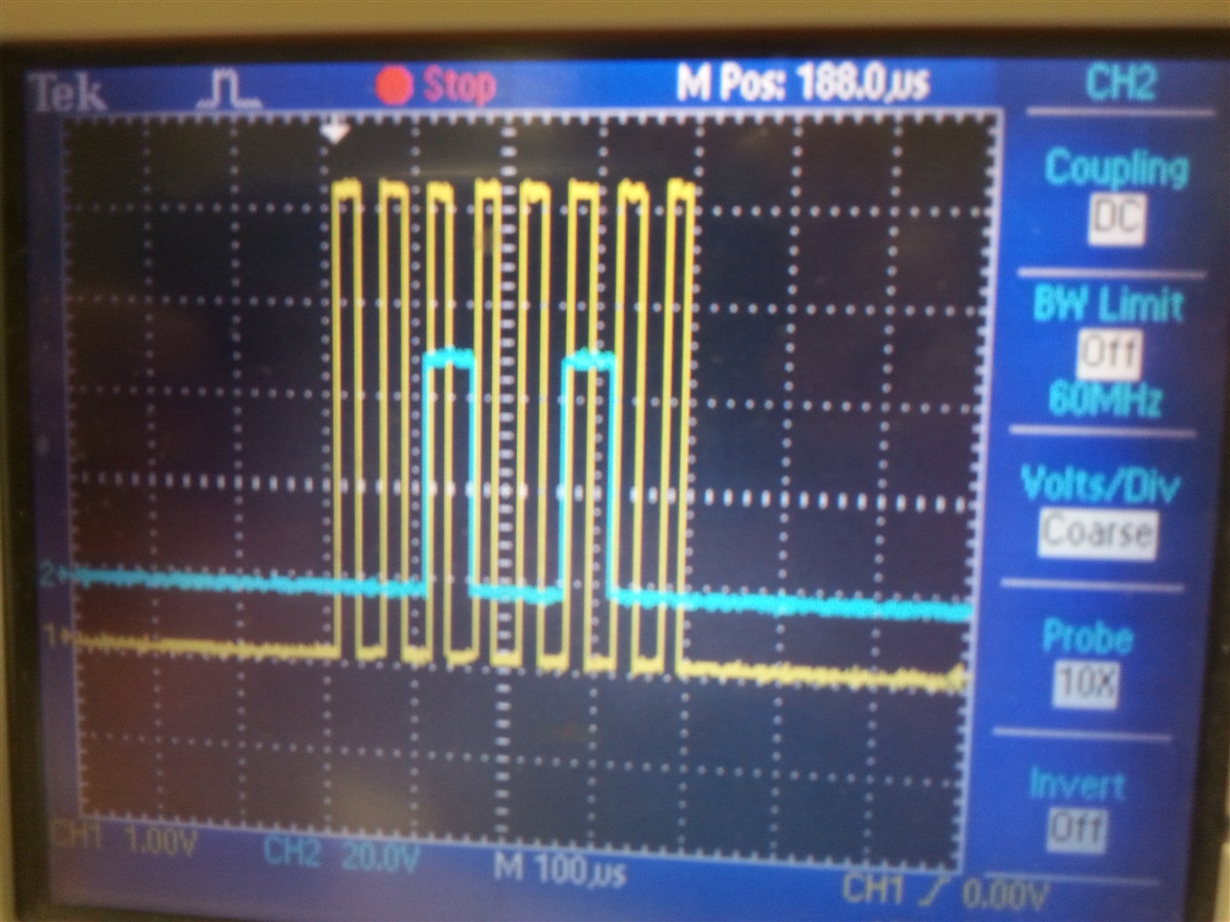Hi,
I am using software SPI in ATMEGA1281, built in module of MikroC PRO for AVR.
I am using following code, kindly let me know where I am making the mistake, please.
Thanks in advance with best regards.
sbit Chip_Select at PORTA5_bit; // Software SPI Chip Select
sbit SoftSpi_CLK at PORTA6_bit; // Software SPI CLK
sbit SoftSpi_SDI at PINA7_bit; // Software SPI Data In
sbit SoftSpi_SDO at PORTG2_bit; // Software SPI Data Out
sbit Chip_Select_Direction at DDA5_bit;
sbit SoftSpi_CLK_Direction at DDA6_bit;
sbit SoftSpi_SDI_Direction at DDA7_bit;
sbit SoftSpi_SDO_Direction at DDG2_bit;
void main()
{
int i;
unsigned short out_spi;
DDRA = 0x7F; // set direction to be output at Port A
DDRB = 0xFF; // set direction to be output at Port B
DDRC = 0xF0; // set direction to be output at Port C
DDRD = 0xFF; // set direction to be output at Port D
DDRE = 0xFF; // set direction to be output at Port E
DDRG = 0xFF; // set direction to be output at Port G
PORTB = 0x00; // PORTB Output
PORTD = 0x40; // PORTD Output
PORTE = 0x00; // PORTE Output
PORTG = 0x00; // PORTG Output
UART2_Init(115200); // UART Initialization at 115200 Baud Rate
Soft_SPI_Init(); // Init Soft_SPI
Delay_ms(20000); // Delay of 2second
PORTC5_bit= 1; //CLKSEL=1 for internal Clock of ADS1299
Delay_ms(1000);
PORTC7_bit= 1; //START of ADS1299 set High
PORTA0_bit= 1; //PDWN of ADS1299
delay_ms(1200);
/* For Sequence detection*/
for ( i=0; i<10; i++)
{
UART2_Write_Text("A");
delay_ms(500);
UART2_Write_Text("B");
delay_ms(500);
UART2_Write_Text("C");
delay_ms(500);
}
PORTA5_bit= 0; // Chip Select of ADS1299
Soft_SPI_Write(0x88); //Data Mode
delay_ms(15);
PORTA5_bit= 1;
delay_ms(200);
/* ADS1299 Reset Setting*/
PORTA5_bit= 0; // Chip Select of ADS1299
Soft_SPI_Write(0x60); //Reset
delay_ms(15);
PORTA5_bit= 1;
delay_ms(200);
/* SDATA & RREG*/
PORTA5_bit= 0; // Chip Select of ADS1299
Soft_SPI_Write(0x88); // SDATA ADS1299
delay_ms(15);
PORTA5_bit= 1;
PORTA5_bit= 0;
Soft_SPI_Write(0x04); // RREG ADS1299
Soft_SPI_Write(0x00); // Ask for 1 Byte
delay_ms(15);
PORTA5_bit= 1;
do
{
PORTA3_bit= 1; // Debug LED1
PORTA1_bit= 0; // Debug LED2
Delay_ms(500);
PORTA5_bit= 0;
out_spi = Soft_SPI_Read(0x00); // Read ADS1299 ID
delay_ms(15);
PORTA5_bit= 1;
UART2_Write(out_spi);
delay_ms(5);
PORTA3_bit= 0; // Debug LED1
PORTA1_bit= 1; // Debug LED2
Delay_ms(500);
} while(1); // Endless loop
}



